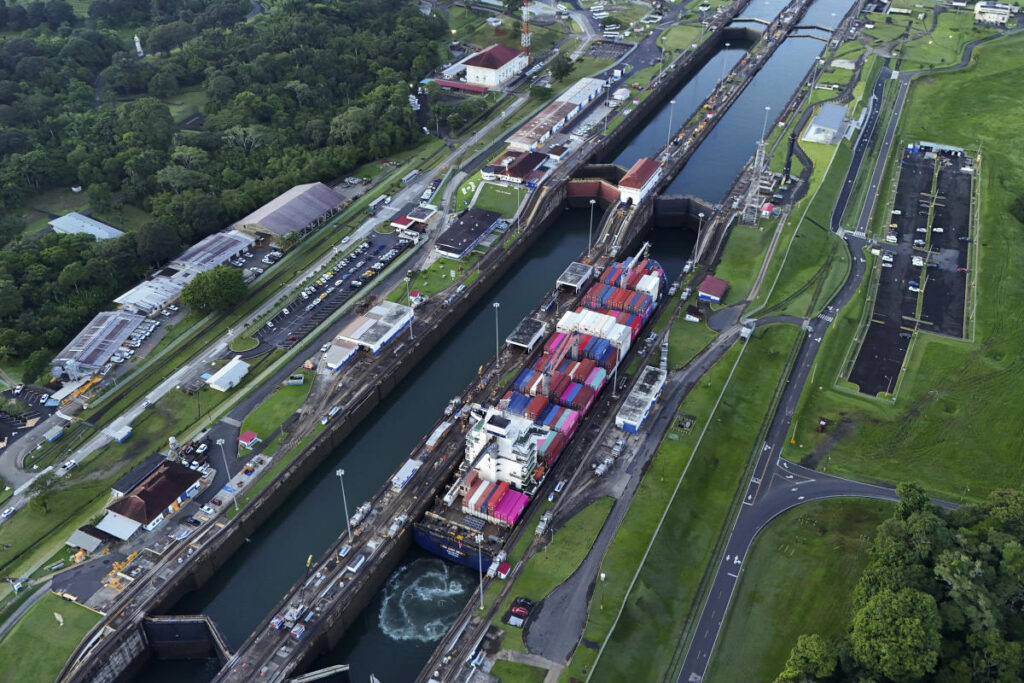The Panama Canal has long been heralded as a significant achievement in engineering and global trade, a sentiment echoed by former President Teddy Roosevelt, who once praised it as a prideful feat for the United States. However, with the election of Donald Trump, the conversation surrounding the canal took a sharp turn. Trump has threatened to demand the canal’s return to U.S. control due to an increase in fees imposed by Panama for its use. He has indicated that if changes are not implemented quickly after he takes office, he would consider action to reclaim the canal, despite the fact that such a move would require extraordinary and unlikely measures, such as military intervention.
The canal itself is a crucial waterway that spans 51 miles across Panama, significantly shortening the travel distance for ships between the Atlantic and Pacific Oceans compared to the perilous route around Cape Horn. The U.S. International Trade Administration recognizes the canal as a significant asset for American businesses, contributing to substantial savings in time and fuel costs, particularly for perishable goods and industries relying on just-in-time supply chains—making its availability vital for global trade.
The history of the Panama Canal’s construction reflects both ambition and tragedy. The first attempts to build the canal were led by French engineer Ferdinand de Lesseps in the 1880s, which ultimately failed due to high mortality rates from tropical diseases and difficult working conditions. Following this setback, U.S. involvement became more significant after Panama’s declaration of independence from Colombia in 1903, which was assisted by U.S. military intervention. The subsequent construction by the U.S. commenced and was completed in 1914, but tensions over sovereignty persisted, leading to a generational struggle for Panama’s control over the waterway.
Control over the canal transitioned from the U.S. to Panama at the end of 1999, based on treaties negotiated during the Carter administration in the late 1970s. These treaties were designed to ensure the canal’s neutrality while establishing a timeline for U.S. withdrawal. Despite opposition at the time, public sentiment shifted over the years, recognizing the sovereignty of Panama over the canal. Under Panamanian administration, the canal has not only been maintained efficiently but has also undergone significant expansions, ultimately reflecting a successful transition in management.
Recent increases in shipping fees by Panama have fueled Trump’s assertions that American interests are being unfairly jeopardized. He claims that the agreements made in 1977 obligate Panama to maintain fairness in operations concerning U.S. users. However, experts assert that the neutrality treaty does not provide a legal basis for the U.S. to reclaim the canal. Furthermore, former canal administrator Jorge Luis Quijano emphasized the uniformity and necessity of the current fee structure, indicating that it is a rational response to demands and conditions rather than arbitrary increases.
In light of these developments, analysts have expressed concern over the implications of Trump’s rhetoric, suggesting that his confrontational stance might undermine U.S.-Panama relations—an uncomfortable prospect given Panama’s shifting alliances, including its growing ties to China. Experts argue that antagonizing Panama over the canal issue may lead to broader geopolitical repercussions, particularly since Panama remains a key partner in addressing immigration concerns from South America. Ultimately, the dialogue surrounding the canal illustrates the complexities of international agreements and the challenges of navigating them in a contemporary political context.

